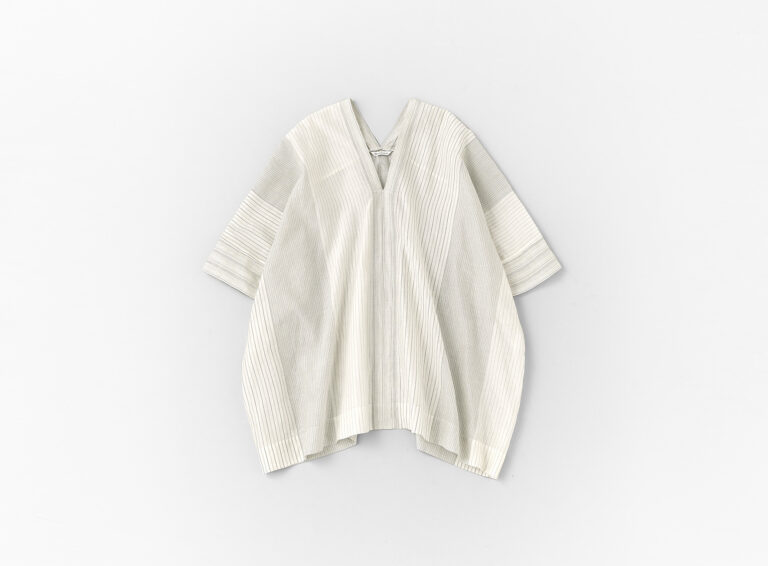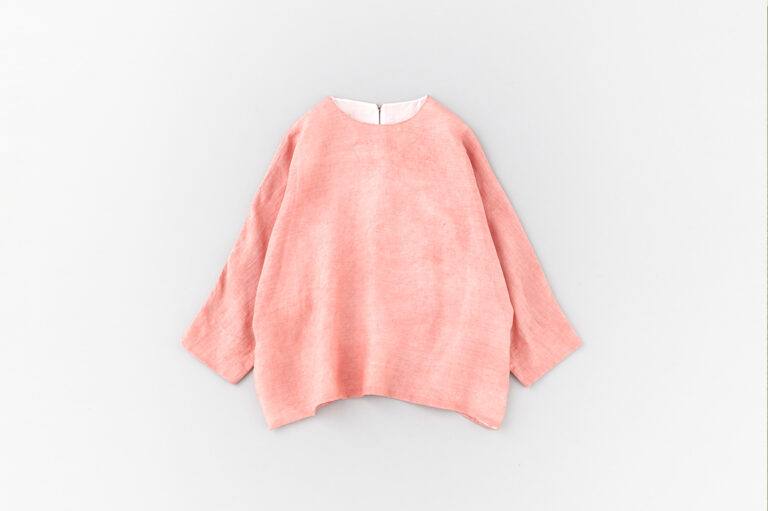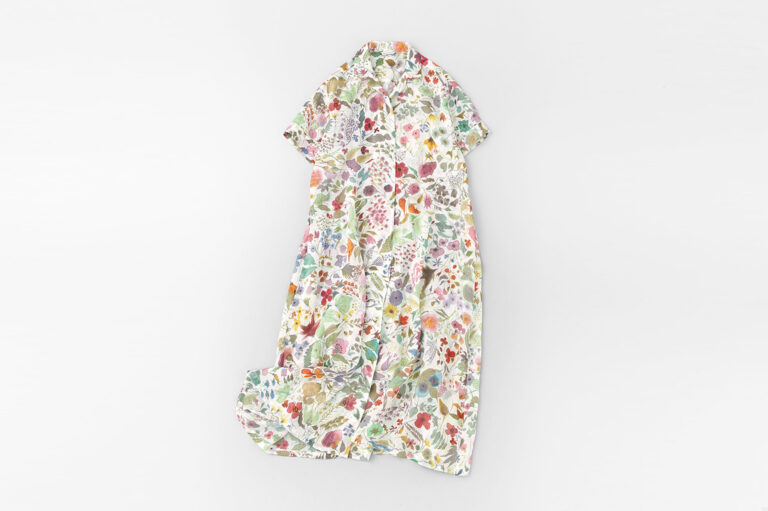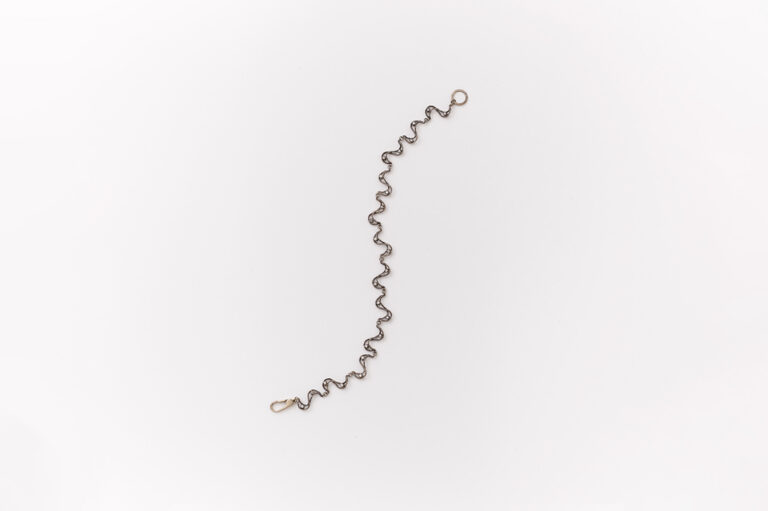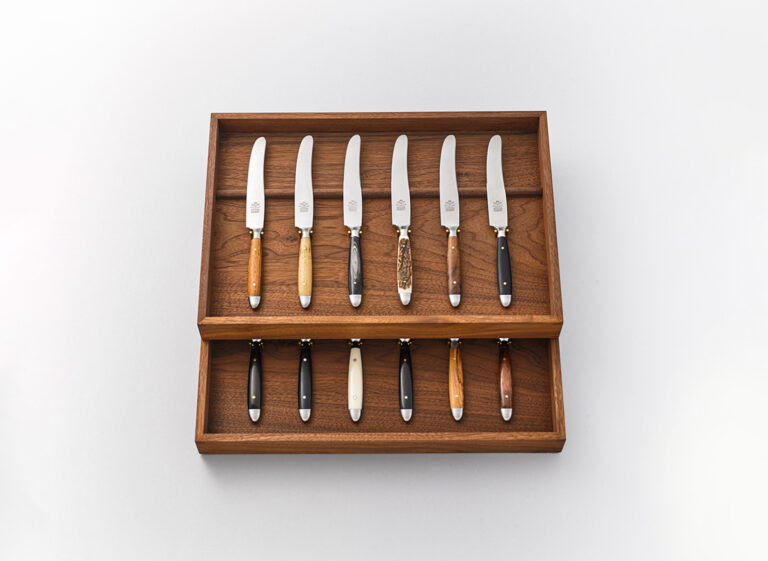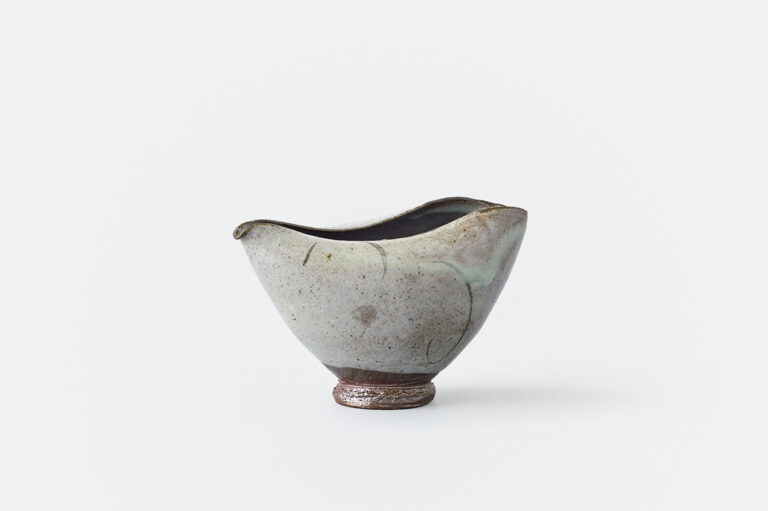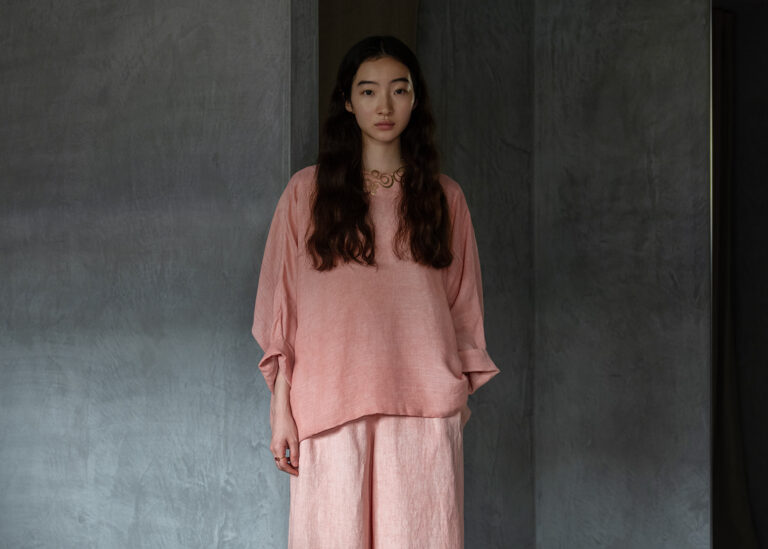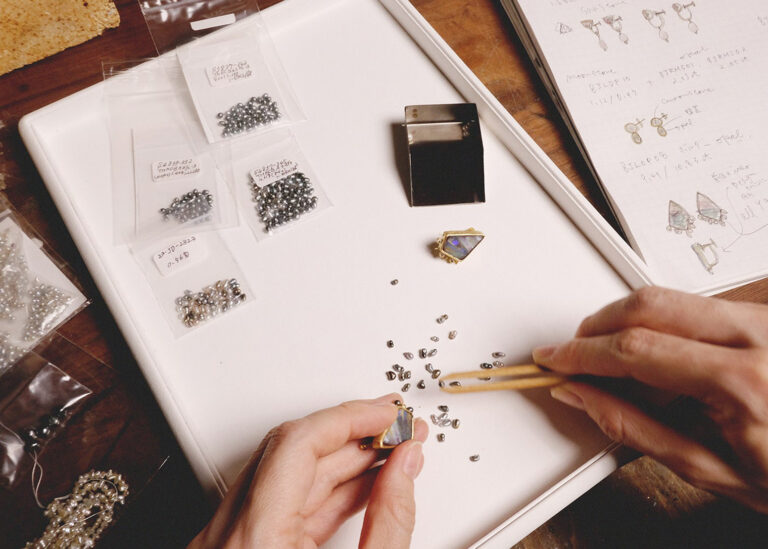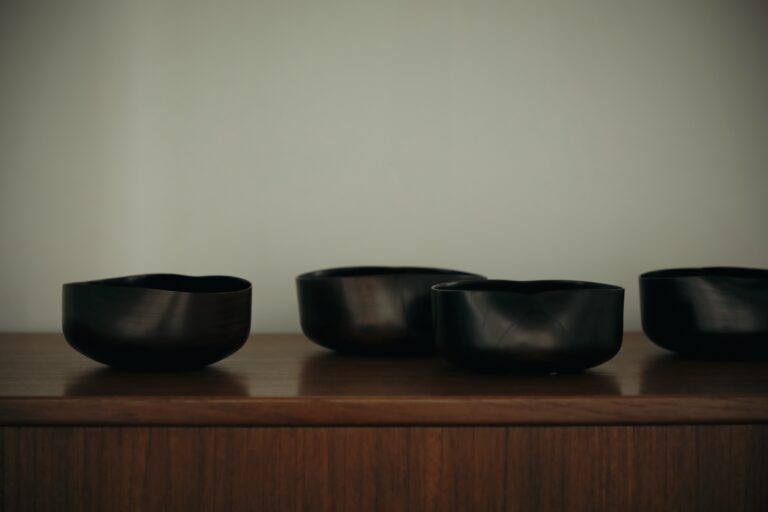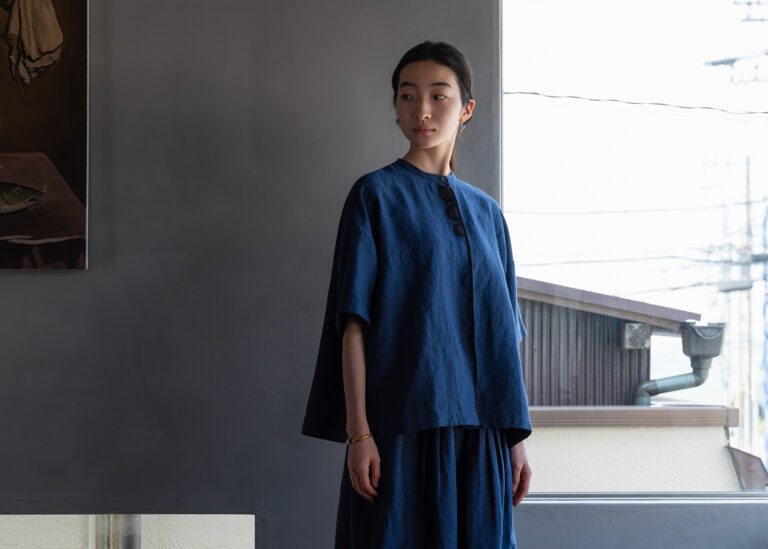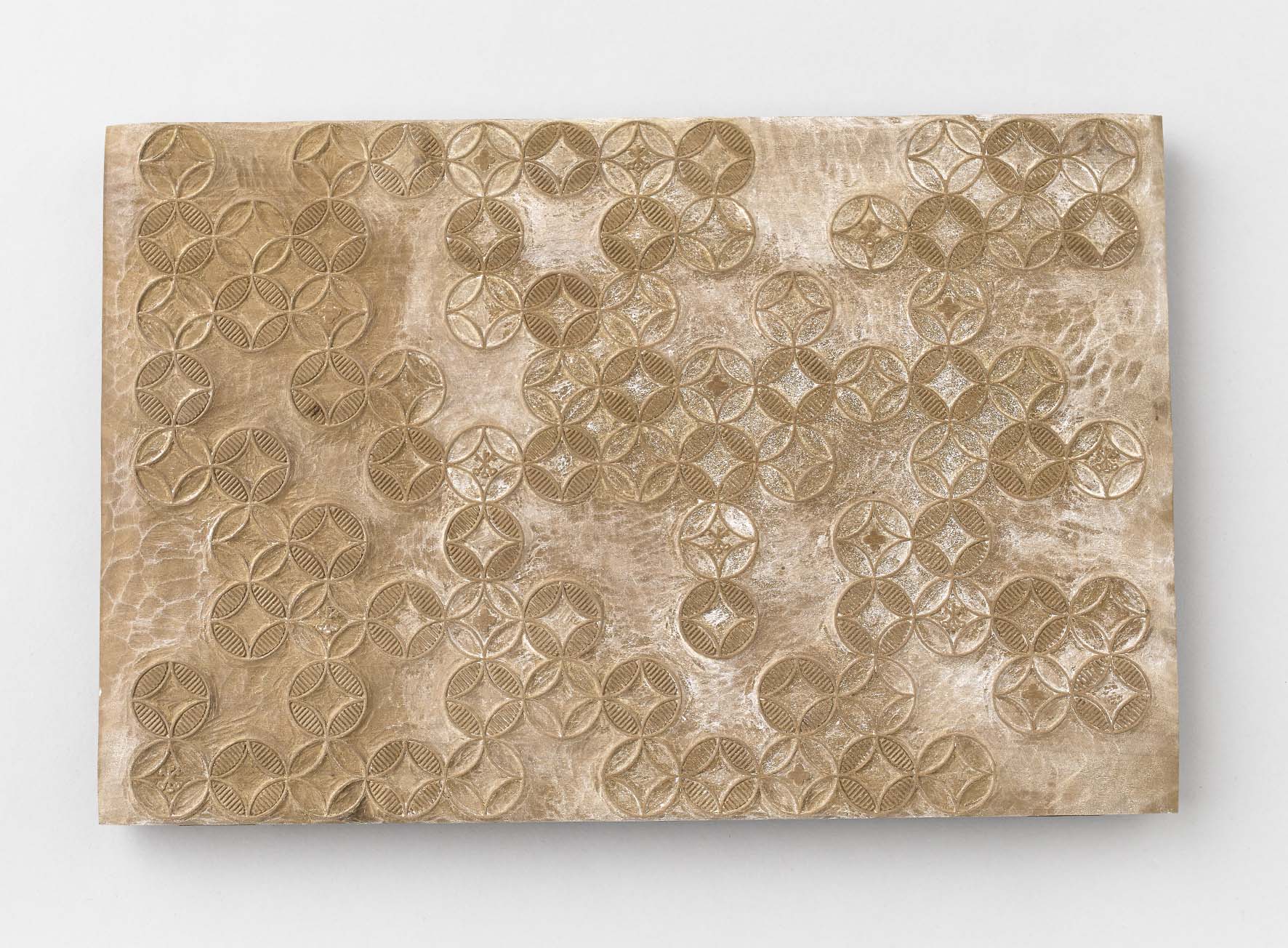©︎Maya Matsuura
The karakami tradition dates back to the the Kamakura and Muromachi eras of Japan. Alongside the changes in architectural styles of the times, the technique was used for partitions, folding screens, and eventually for interior decoration such as fusuma (Japanese style sliding doors covered in paper) and wallpaper. In the Edo period, it was a style popular amongst not only shrines and temples, but also in the household of samurai families, court nobles, townspeople and tea masters, and eventually the style broadly spread as a cultural movement.
Kamisoe’s shop and studio resides in Nishijin, Kyoto since 2009. The shop proposes karakami which also incorporates modern elements into the traditional style. The owner and karakami craftsman, Ko Kado, has a degree in the Academy of Art University in San Francisco in graphic design. He worked as a freelance designer in New York before returning to Japan to join a celebrated karakami studio in Kyoto to train for many years. His craftsmanship today reflects his experienced background in the arts.
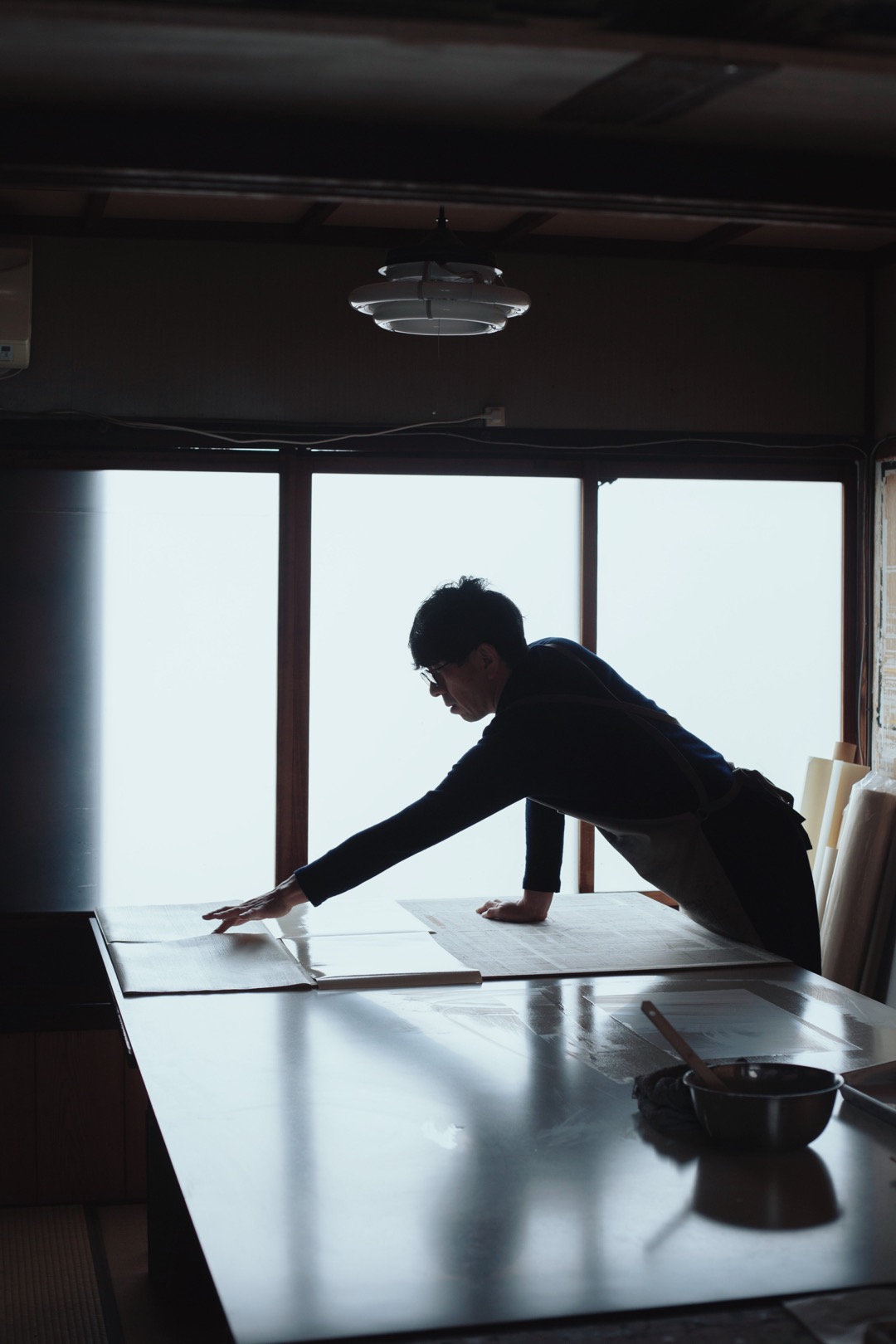
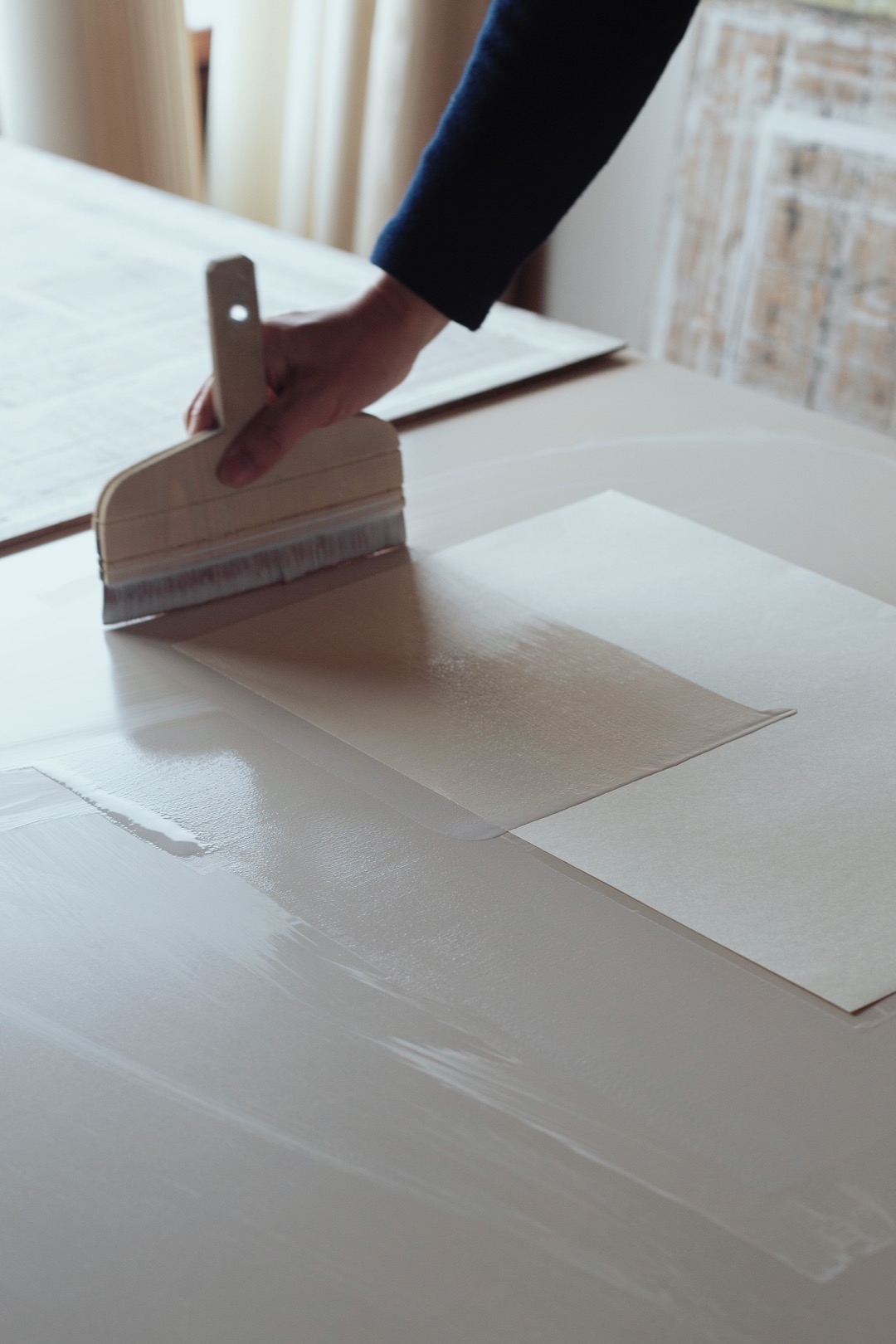
“I feel like I’m learning classic patterns, understanding their individuality to an extent, and then I re-edit the patterns to suit a modern setting. If you put too much emphasis on the pattern, it will become too strong and lively, so I put more emphasis on the texture, and stress to bring out the high-quality expressions of the materials. Rather than becoming entirely a craftsman, the perspectives I cultivated when I was studying design was useful, and my analogy to editing is therefore always persistent in my design.
In this exhibition, titled “Shiro to shiro,” (Two Chinese characters that read the same). ‘Shiro (blank)’ represents the blank space of paper, and ‘Shiro (white)’ of mica isinglass powder represents the blank beautiful and rich depth of Washi (Japanese paper), pigments, and materials, based on the image of a Byobu (folding screen). Originally, a folding screen is something that divides space. It is one of the tools that separates a single space and creates a new scene, a new atmosphere. You can see our lightweight and thin versions folding screens that function in their traditional ways as partitions and blindfolds but can be used in versatile ways such as lied flat on a surface, on a display stand, or at the entrance of your home.
I think the existence of a blank space is a design element that you cannot notice unless you are conscious of it. The white space is more important than the main pattern, the space is more important than the karakami, fusuma, and the colors of the surrounding building materials is more important than the color of the karakami. I feel that the balance of these surroundings creates the rhythm and atmosphere of a space. So, it’s not that I want people to notice the blank space, but rather, it’s my philosophy to create something that makes the people in the space feel relaxed and comfortable without them even noticing why.”
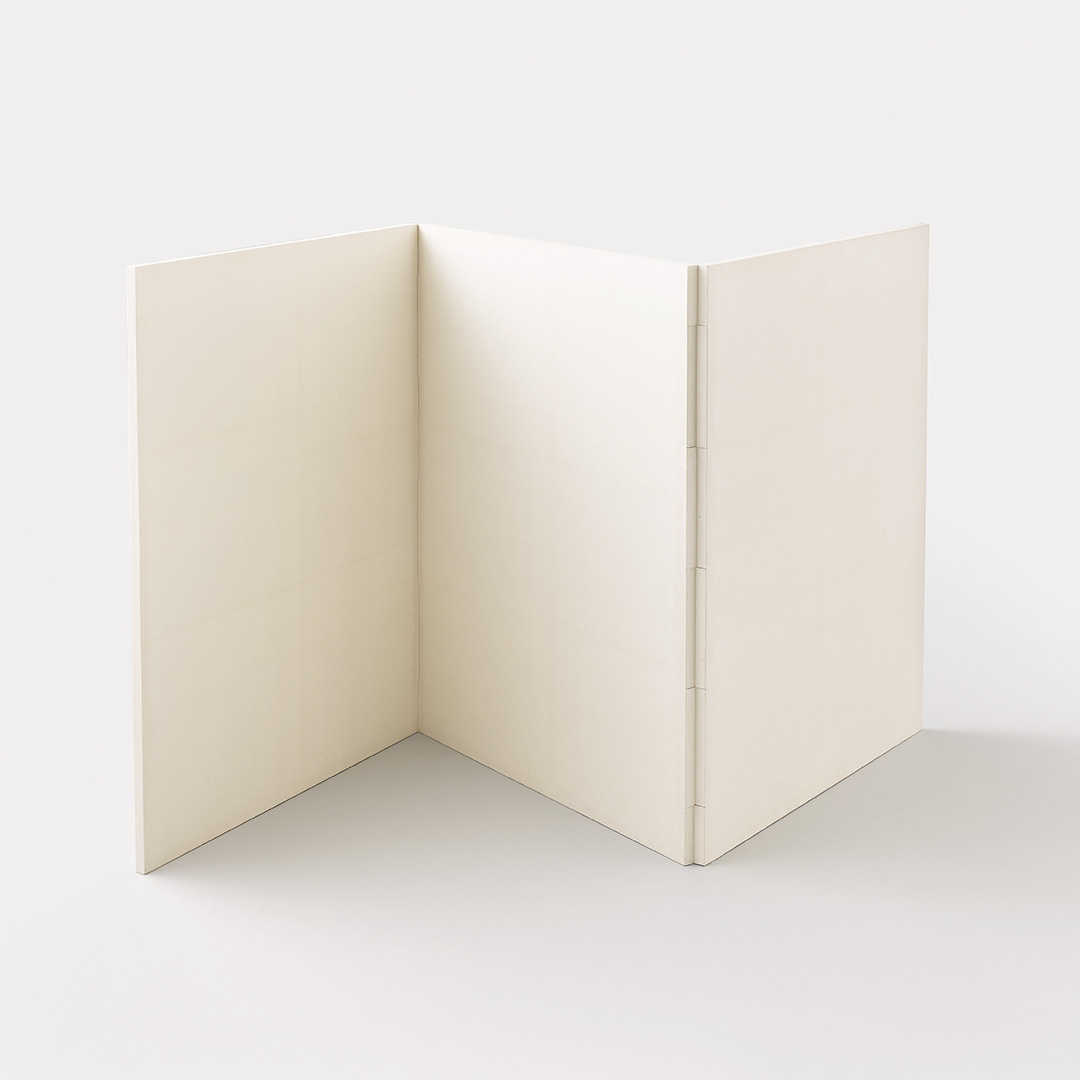
In this exhibition, we will present our original karakamipattern named, “Arts & Science Yabure Shippou.” It is an archive pattern of floret cloisonné used in our A&S collection’s original fabrics. The patterns of the cloisonné are intentionally broken to create a blank space to create a rhythm, and instead of the florets in the cloisonne, the A&S key mark is placed randomly. The thin lines and balance with the mica isinglass powder are calculated very nicely, resulting in a beautiful karakami.
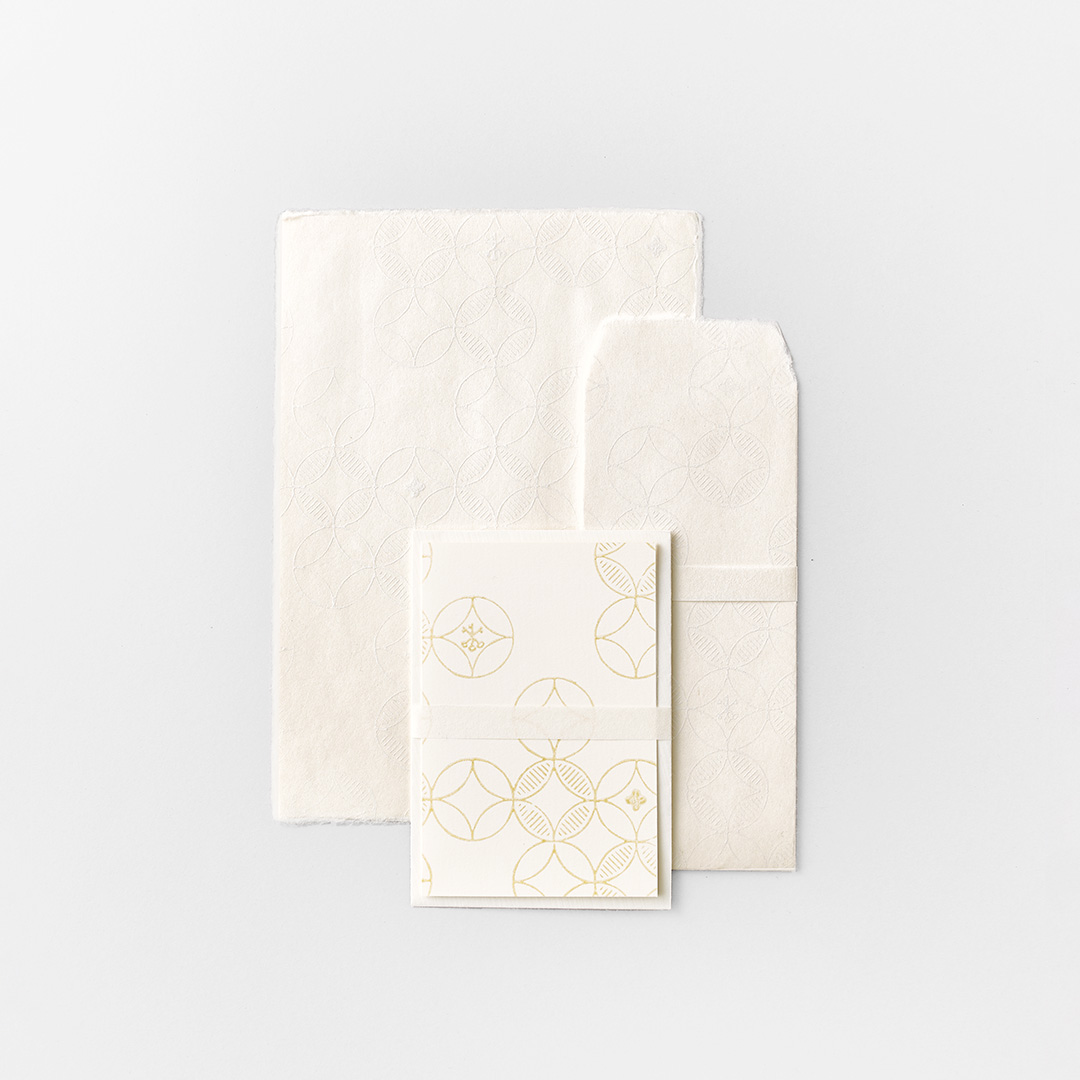

PROFILE
Ko Kado specializes in the traditional craft of karakami, a decorative paper printed with wood-block stamps. Kado graduated from the Academy of Art University in San Francisco with a degree in graphic design. He worked as a freelance designer in New York before returning to Japan to join a celebrated karakami studio. He struck out on his own in 2009, opening his independent shop and studio Kamisoe in Nishijin, Kyoto. Kado develops his designs specially for individual clients, taking into consideration their purposes and needs. His designs are distinguished by a careful balance between figure and ground – between the open space of the sheet of paper and the rhythmic pattern of the stamp.
